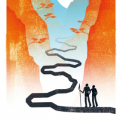A Lamp to Dispel Darkness
 Jeroen
Not all those who wander are lostNetherlands Veteran
Jeroen
Not all those who wander are lostNetherlands Veteran
I came across this interesting text today, and was wondering what you might make of it.
It is by the Tibetan teacher Mipham Rinpoche, written in 1906 as a guide for the benefit of village yogis and others, who, while not able to exert themselves too much in study and contemplation, still wish to take the very essence of mind into experience through practice. It has been set out in language that is easy to understand, in accordance with the experiential guidance of a great many old realized masters.
The Instruction that Cracks Open the Egg-shell of Ignorance
When you leave your mind in a state of natural rest, without thinking any particular thought, and at the same time maintain some kind of mindfulness, you can experience a state of vacant, neutral, apathetic indifference, called “lungmaten”, (a ‘no-man’s land’), where your consciousness is dull and blank.
In this, there is not any of the clear insight of vipaśyanā, which discerns things precisely, and so the masters call it marigpa (“non-recognition, ignorance, unknowing”). Since you cannot define it and say “This is what it’s like”, or “This is it!” such a state is called lungmaten (“undecided, indeterminate”). And since you cannot say what kind of state it is you are resting in, or what your mind is thinking, it is also called tha mal tang nyom (“an ordinary state of apathetic indifference”). In fact, you are stuck in an ordinary state within the ālaya.
It later on goes into detail about how the method relates to samatha and vipasyana. It seems intriguing, I might try this as a meditation method.
http://www.lotsawahouse.org/tibetan-masters/mipham/mipham-lamp



Comments
I inadvertently entered lungmaten a few times at my last job. I admit, I was bored you-know-what-less and trying to not fall asleep at my desk. But it's a very profound state of mind. I can't quite put it into words, but when things get stressful at this job, I'd love to be able to escape to the balcony and enter lungmaten again.
_ /\ _